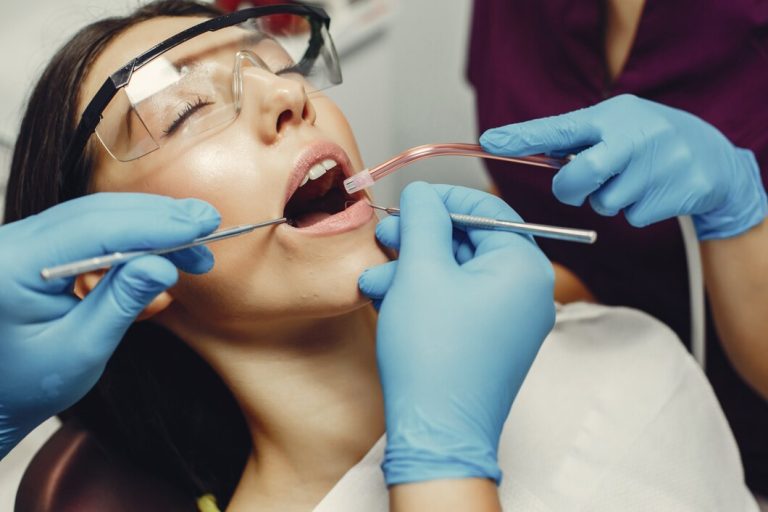Many people believe myths about gum disease that can lead to neglecting their oral health. Unfortunately, these misunderstandings can result in serious consequences. It’s crucial to separate fact from fiction to protect your gums and overall health. Understanding the realities of gum disease can help you take better care of your oral health and improve your quality of life.
Myth 1: Gum Disease is Rare
Many people think gum disease is rare, but this is not true. Gum disease is quite common and affects many adults. It starts with plaque, a sticky film of bacteria that forms on our teeth. If not removed by brushing and flossing, plaque can harden into tartar, leading to gum inflammation.
Gum disease can start as gingivitis, which causes red, swollen gums that may bleed during brushing. If left untreated, gingivitis can progress to periodontitis, a more serious condition that can lead to tooth loss. Knowing how common gum disease is can help us take better care of our gums and prevent these issues.
Myth 2: Bleeding Gums are Normal
Another myth is that bleeding gums are normal and nothing to worry about. However, bleeding gums can be an early sign of gum disease and need attention. If gums bleed when brushing or flossing, it may indicate an underlying problem.
Bleeding gums can result from plaque buildup at the gum line. This plaque can cause gums to become inflamed and more likely to bleed. Ignoring this warning sign can lead to serious gum issues. By addressing the cause of bleeding gums early, we can prevent gum disease from getting worse and maintain better oral health.
Myth 3: You Don’t Need to Floss if You Brush Well
Many people believe that if they brush their teeth well, they don’t need to floss. This is a common myth that can harm our gum health. While brushing cleans the surfaces of our teeth, it doesn’t remove food particles and plaque from between them. This is where flossing plays a crucial role.
Flossing helps get rid of plaque and food debris between the teeth and below the gum line, areas that a toothbrush can’t reach. By flossing daily, we prevent plaque buildup that can lead to gum disease. Using dental floss or other tools like water flossers can help ensure that every part of the mouth is clean and healthy.
Myth 4: Gum Disease Only Affects Your Mouth
It’s a widespread belief that gum disease only impacts your mouth, but this isn’t true. Gum disease can have effects beyond the oral cavity and can influence overall health. When gums get infected, bacteria can enter the bloodstream and travel to other parts of the body.
Gum disease has been linked to various health issues, including heart disease and diabetes. Inflammation caused by gum disease can contribute to the development of these conditions. Maintaining good gum health is not only important for our mouth but also for our entire body’s well-being.
Myth 5: Gum Disease Only Affects Older Adults
There’s a misconception that gum disease is something that only affects older adults. While age can be a factor due to cumulative exposure to risk factors, gum disease can develop at any age. Poor oral hygiene, smoking, genetic predisposition, and certain medical conditions can all contribute to its onset.
Younger adults and even teenagers can experience gum disease, especially if oral hygiene practices are inadequate or if they have other risk factors like diabetes or a weakened immune system. Recognizing that gum disease doesn’t discriminate based on age underscores the importance of consistent dental care and regular check-ups from a young age.
Fact: Early Detection and Treatment are Key
Early detection of gum disease is crucial for effective treatment and prevention of complications. Regular dental visits allow for early identification of gingivitis or periodontitis through professional examination and cleaning. Dental professionals can assess gum health, provide personalized oral hygiene recommendations, and intervene early if signs of gum disease are detected.
Treating gum disease in its early stages typically involves professional cleaning to remove plaque and tartar buildup, along with instructions for improved brushing and flossing techniques. More advanced cases may require deeper cleaning procedures like scaling and root planing to remove bacteria from beneath the gum line.
Taking proactive steps to maintain good oral hygiene, including brushing twice a day, flossing daily, and using an antibacterial mouthwash, can significantly reduce the risk of developing gum disease. Moreover, lifestyle changes such as quitting smoking and managing chronic conditions like diabetes can also contribute to better gum health.
By dispelling the myth that gum disease only affects older adults and emphasizing the importance of early detection and treatment, individuals can take control of their oral health and minimize the potential impact of gum disease on their overall well-being.
Conclusion
Understanding the myths and truths about gum disease helps us take better care of our oral and overall health. Knowing that gum disease is common, that bleeding gums are a sign of an issue, that flossing is essential, and that gum disease affects more than just the mouth can help us make informed decisions.
Regular dental checkups and effective oral hygiene are crucial in preventing and managing gum disease. Address your gum health concerns promptly at Colorado Gum Care in Broomfield, CO. Contact us today to schedule a consultation and ensure your gums, including gum grafts near you, are in excellent condition for overall wellness!







